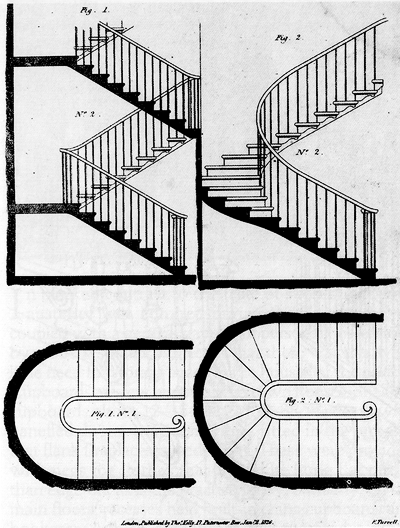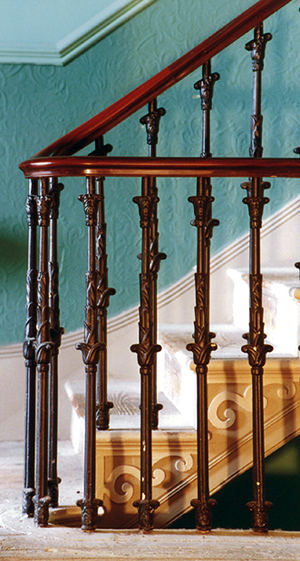The staircase was another prized feature of houses of this period. Typically the stairs have relatively shallow treads giving the staircase a gradual slope which was both elegant and afforded ease of movement for the residents and guests. Many houses had stone staircases, at least for the lower and more public floors, but at the Regency Town House all of the staircases are in wood.

The handrail is made from expensive imported mahogany and is supported by cast iron balusters, probably manufactured at a local foundry. Many houses had dado rails in the halls and stairways but these were not included in the original decorations at The Regency Town House.
The ground floor staircase leads to a half landing, or mezzanine, and its adjacent waiting room. This area has a large window set in an alcove while the ceiling has a richly ornamented, gilded dome.

Above: Staircase of 13 Brunswick Square.
The waiting room is of moderate size and originally contained a newly invented flushable water closet. Visitors could use this room to spruce themselves up before being received by the host or hostess in the drawing room or parlour.
On the first floor landing, outside the drawing room, is a fixed tea tray table made of marble and gilded wood for use by the servants when taking refreshments into the drawing room. Due to its prominent location it was made into an elegant feature, as suggested in many contemporary pattern books and illustrations.